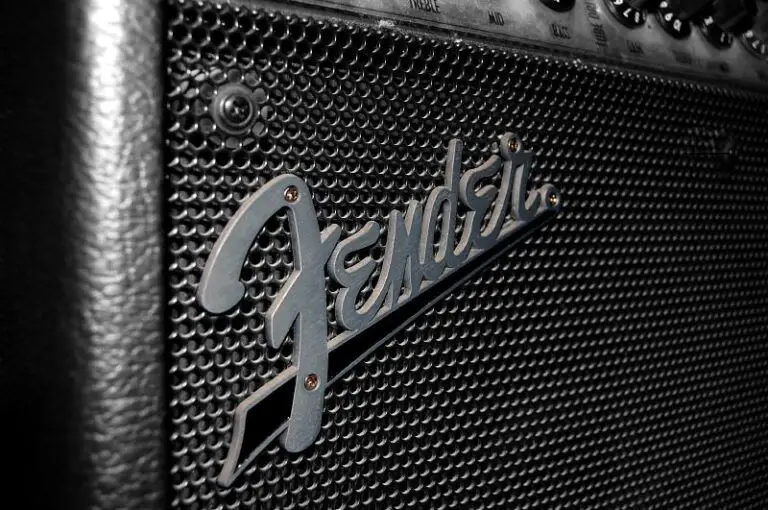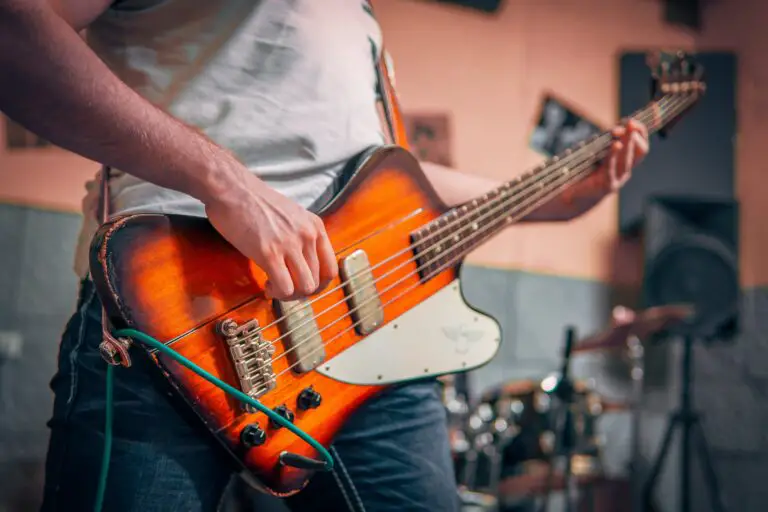Why Do Bands Smash Their Instruments?
There is nothing like seeing a band live. The music often sounds clearer, the crowd’s energy is intoxicating, and there are opportunities to meet your favorite artists in person. While all bands are different, many like to smash their guitars or basses while performing. Why do bands smash their instruments, and is there a benefit?
Bands smash their instruments for many reasons, but the main ones are to convey intense emotions, to create a huge amount of noise, to signal the end of the show, and to honor rock ‘n’ roll traditions.
This article will cover these reasons and explore the popular rock ‘n’ roll act of smashing instruments.
4 Reasons You Might Smash an Instrument (Like a Guitar) on Stage
1. Conveying Intense Emotions
Musicians make music and perform for their fans because they share their emotions. It’s beneficial to human health to express our feelings through journaling, talking to a friend, or writing out your feelings as a song.
Performing a song, especially one that brings up intense emotions, needs some outlet, which often results in smashing an instrument. It is the perfect way to release some of that emotional energy that can come with performing a song that brings up very high and very low feelings.
Equipment and instruments can be expensive, so when a musician destroys something, it shows the audience that they are truly in the moment. It also signals that the show is worthwhile because most performers would not want to destroy thousands of dollars worth of items willingly.
The non-musician equivalent is a rage room. Rage rooms are where you get plopped in a room and wreck things. Here’s a video:
2. Shock the Audience with Noise and Action
Musicians smash their instruments to shock audiences with loud noises. Many music shows are loud anyway because of the speakers, but smashing an instrument is noise on another level.
The Who frontman Roger Daltrey talked to Billboard about his bandmate Pete Townshend becoming famous for smashing his guitar into the stage’s amplifier. He said it was not about the visuals but “the sound it made.” Daltrey talked about how it was like a sacrifice to the rock ‘n’ roll gods that created an “incredible sonic experience.”
Smashing an instrument often sounds like a mixture of the instrument itself (e.g., guitar, drum) and wherever it is being broken. If it hits an amplifier, there will likely be feedback because of the sound waves.
This is also why you don’t see an acoustic guitar smashed on stage. The softer music connected here doesn’t inspire smashing. Plus, the noise produced isn’t as impressive.
3. Ending the Show
Smashing an instrument also signals the end of a show or performance. If there is no instrument to play, then it makes sense that the show can not continue. It’s a pretty “grand finale” spectacle.
Usually, crowds cheer and shout for an encore, a reappearance, or an additional performance demanded by an audience. Depending on the band, the smashing of the instrument can come after the encore or the general performance.
When the audience sees a musician smashing their instrument, there is often a feeling of satisfaction, and they are not left wanting more.
4. Honoring Rock ‘n’ Roll Traditions
The last reason for smashing instruments during a performance is that it honors rock ‘n’ roll traditions. Music experts have noted that Pete Townshend was the first musician to break his guitar instrument in the 1960s. Since then, other artists have followed suit.
Instead of smashing their instruments, several artists destroy them in other ways. Jimi Hendrix lit his guitar on fire, and Annea Lockwood let her piano burn down. Most musicians feel it is the perfect way to please and give the audience a rousing and exciting show.
Why are People More Likely To Smash a Guitar on Stage?
Guitars are easier to lift than other instruments. The amplifier creates a pleasing noise when the smashing begins.
Instrument destruction isn’t limited to guitars. Some drummers will smash their drumsticks and pierce their snares. But, lifting a drum kit is pretty intense, so you aren’t likely to see that.
Microphones might make an intense noise when you smash them. However, they are incredibly expensive and not visually impressive when you crush them.
Bands and Musicians Known for Smashing Instruments
Here’s a list of bands known for guitar smashing and other kinds of instrument destruction:
- Green Day – Billie Joe Armstrong and Mike Dirnt smashed their guitars during an iHeartRadio music festival out of frustration and lack of time for their performance.
- Muse – Matthew Bellamy has the Guinness world record for breaking the most guitars during one tour at 140.
- Nirvana – Kurk Cobain smashed various types of instruments from the 1980s to the 1990s.
- Nine Inch Nails – Trent Reznor and his crew destroyed 137 Gibson Les Pauls during the 1991 Lollapalooza tour. They also were known for destroying all kinds of musical equipment.
- Jerry Lee Lewis – The first rock artist known for starting pianos on fire back in the 1950s.
- The Clash – Paul Simonon destroyed his bass because the bouncers didn’t allow fans to stand up during one of their shows.
- The Who – Keith Moon was known for destroying his drumset. In one famous example, he exploded (yes, with explosives) his drum set during the 1967 Smothers Brothers Comedy Tour. Pete Townsend, another member of The Who, popularized the smashing of guitars.
From the examples above, bands take instrument destruction seriously. Some go as far as to use lighter fluid or explosives to take their instruments out in a “blaze of glory.”
Meanwhile, the emotional side comes from Nine Inch Nails, who smashed all sorts of instruments in fits of frustration of rage. They took the “if it is broken, just finish it off” approach to instrument repair.
Doesn’t Smashing Instruments Get Expensive?
Now, you might be thinking that this gets pretty expensive. Thankfully, most instances of instrument destruction don’t involve destroying the actual instruments. Instead, the instruments are replaced by cheap alternatives.
The cheaper instruments, such as guitars, are often made of hollow polyvinyl or plastic hardware that creates satisfying cracks and splits. For bigger instruments like pianos, sometimes they are no longer playable and, thus, would have been destroyed anyway.
Of course, some examples on this list, involve the instruction of an actual musical instrument. Those musicians spend thousands of dollars to let off some steam, which isn’t ideal.







